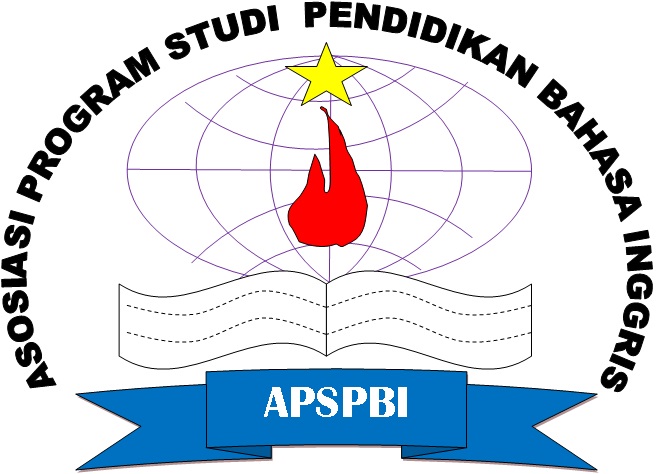Examining Google Classroom-assisted blended learning in Indonesian EFL grammar classes
DOI:
https://doi.org/10.28918/erudita.v2i1.5345Keywords:
Blended learning, Google Classroom, Grammar mastery, Learning management systemAbstract
The present study aims to examine the effectiveness of Google Classroom-assisted blended learning in two EFL grammar classes. It investigates the difference between EFL students’ grammar mastery applying blended learning and discussion method. Framed in experimental research, this study recruited 52 EFL student teachers in an Indonesian university to participate. Data were garnered through multiple choice tests. Study findings reveal that the significance value of paired sample t-test was 0.00 < 0.05, showing that there was significant influence of blended learning toward the EFL students’ grammar mastery. The significance value of t-test (2.029) > t-table (0.2732) indicates that there was a difference in the students’ grammar mastery after giving treatment in experimental and control groups. The N-gain value was 0.1164 > 0.7, proving that Google Classroom-aided blended learning was effective to foster the students’ grammar mastery. Since the t-test (2.029) > t-table (0.2732), H1 was accepted and H0 was rejected. This means that Google Classroom-assisted blended learning gave a positive impact on the students’ grammar mastery. This study concludes with some empirical evidence that Google Classroom-mediated blended learning is promoted to be an innovative learning management system in EFL classes to boost students’ grammar mastery.
References
Adhikari, K. (2017). Factors influencing the selection of teaching methods in an EFL context [Master’s thesis, Michigan State University]. MSU Libraries Digital Repository. https://d.lib.msu.edu/etd/6703
Al Bataineh, K. B., Abdullah Ahmed Banikalef, A., & H. Albashtawi, A. (2019). The effect of blended learning on EFL students’ grammar performance and attitudes: An investigation of Moodle. Arab World English Journal, 10(1), 324–334. https://doi.org/10.24093/awej/vol10no1.27
Albiladi, W. S., & Alshareef, K. K. (2019). Blended learning in English teaching and learning: A review of the current literature. Journal of Language Teaching and Research, 10(2), 232-238. https://doi.org/10.17507/jltr.1002.03
Ameliani, A. N. (2019). Students’ difficulties in grammar of seventh grade junior high school 1 Magelang. Proceedings of the 1st Conference of English Language and Literature (CELL) (pp. 1-8).
Arifin, M., Salim, M., Syukrisamsuri, A., & Akib, H. (2015). Developing discussion method in English classroom. SSRN Electronic Journal, 1-6. https://doi.org/10.2139/ssrn.2604402
Ali, F., & Sofa, E. M. (2018). Students’ perceptions of the implementation of blended learning in a large English class. Edulitics (Education, Literature, and Linguistics) Journal, 3(1), 15-28. http://www.e-jurnal.unisda.ac.id/index.php/edulitic/article/view/878
Baleghizadeh, S., & Mozaheb, M. A. (2011). A profile of an effective EFL grammar teacher. Journal of Language Teaching and Research, 2(2), 364–369. https://doi.org/10.4304/jltr.2.2.364-369
Botero, G. G., Questier, F., Cincinnato, S., He, T., & Zhu, C. (2018). Acceptance and usage of mobile assisted language learning by higher education students. Journal of Computing in Higher Education, 30, 426-451. https://doi.org/10.1007/s12528-018-9177-1
Campbell, D. T., & Stanley, J. C. (1963). Experimental and quasi experimental design for research. Houghton Mifflin Company.
Creswell, J. W. (2009). Research design: Qualitative, quantitative, and mixed methods approaches. SAGE Publication.
Curtin, A., & Hall, K. (2018). Research methods for pedagogy: Seeing the hidden and hard to know. International Journal of Research & Method in Education, 41(4), 367-371. https://doi.org/10.1080/1743727X.2018.1495366
Cushing, I., & Helks, M. (2021). Exploring primary and secondary students’ experiences of grammar teaching and testing in England. English in Education: Research Journal of the National Association for the Teaching of English, 55(3), 239-250. https://doi.org/10.1080/04250494.2021.1898282
Handayani, N. D., & Johan, M. (2018). Correlation between problem faced in grammar and writing ability of EFL university students. JEE (Journal of English Education), 4(2), 33–41. https://journal.upp.ac.id/index.php/JEE/article/view/523
Heggart, K. R., & Yoo, J. (2018). Getting the most from Google Classroom: A pedagogical framework for tertiary educators. Australian Journal of Teacher Education, 43(3), 140–153. http://dx.doi.org/10.14221/ajte.2018v43n3.9
Hubackova, S., Semradova, I., & Klimova, B. F. (2011). Blended learning in a foreign language teaching. Procedia - Social and Behavioral Sciences, 28, 281–285. https://doi.org/10.1016/j.sbspro.2011.11.054
Iman, J. N., & Angraini, N. (2019). Discussion task model in EFL classroom: EFL learners’ perception, oral proficiency, and critical thinking achievements. Pedagogika, 133(1), 43–62. https://doi.org/10.15823/p.2019.133.3
McGinnis, K. (2021, May 26). What is Google Classroom? And how are teachers using it? Learn more about this popular platform and how to use it with your students. Common Sense Education. https://www.commonsense.org/education/articles/teachers-essential-guide-to-google-classroom
Murtikusuma, R. P., Hobri, Fatahillah, A., Hussen, S., Prasetyo, R. R., & Alfarisi, M. A. (2019). Development of blended learning based on Google Classroom with using culture theme in Mathematics learning. Journal of Physics: Conference Series, 1165, 012017. https://doi.org/10.1088/1742-6596/1165/1/012017
Nuraeni. (2019). Problems encountered by learners and how to deal with them in learning English as a foreign language. Proceedings of UHAMKA International Conference on ELT and CALL (UICELL) 2019. https://journal.uhamka.ac.id/index.php/uicell/article/download/4142/1263/
Ökmen, B., & Kılıç, A. (2016). The effect of language teaching methods on academic success in Turkey. Journal of Education and Training Studies, 4(10), 193–199. https://doi.org/10.11114/jets.v4i10.1767
Qindah, S. (2018). The effects of blended learning on EFL students’ usage of grammar in context. The Eurasia Proceedings of Educational & Social Sciences (EPESS) 2018 (pp. 11-22). ISRES Publishing. http://www.epess.net/en/download/article-file/534204
Shaharanee, I. N. M., Jamil, J. M., & Rodzi, S. S. M. (2016). Google Classroom as a tool for active learning. AIP Conference Proceedings. https://doi.org/10.1063/1.4960909
Sheerah, H. A. S. (2020). Using blended learning to support the teaching of English as a foreign language. Arab World English Journal, 6, 191–211. https://doi.org/10.24093/awej/call6.13
Shortt, M., Tilak, S., Kuznetcova, I., Martens, B., & Akinkuolie, B. (2021). Gamification in mobile-assisted language learning: A systematic review of Duolingo literature from public release of 2012 to early 2020. Computer Assisted Language Learning, 1-28. https://doi.org/10.1080/09588221.2021.1933540
Taghizadeh, M., & Yourdshahi, Z. H. (2020). Integrating technology into young learners' classes: language teachers' perceptions. Computer Assisted Language Learning, 33(8), 982-1006. https://doi.org/10.1080/09588221.2019.1618876
Thomas, L. (2020a, July 21). Quasi-experimental design: Definition, types & examples. SCRIBBR. https://www.scribbr.com/methodology/quasi-experimental-design/
Thomas, L. (2020b, September 7). Cluster sampling: A simple step-by-step guide with examples. SCRIBBR. https://www.scribbr.com/methodology/cluster-sampling/
Downloads
Published
How to Cite
Issue
Section
License
Copyright (c) 2022 Nur Muthmainnah

This work is licensed under a Creative Commons Attribution-ShareAlike 4.0 International License.















